Due to their exotic beauty, succulent plants are famous among gardeners and indoor enthusiasts. Not only this, but they are easy-to-grow plants resistant to all insect pests and microbes. However, it is not always the same that succulents will not attract bugs. Let’s discuss, do succulents attract bugs?
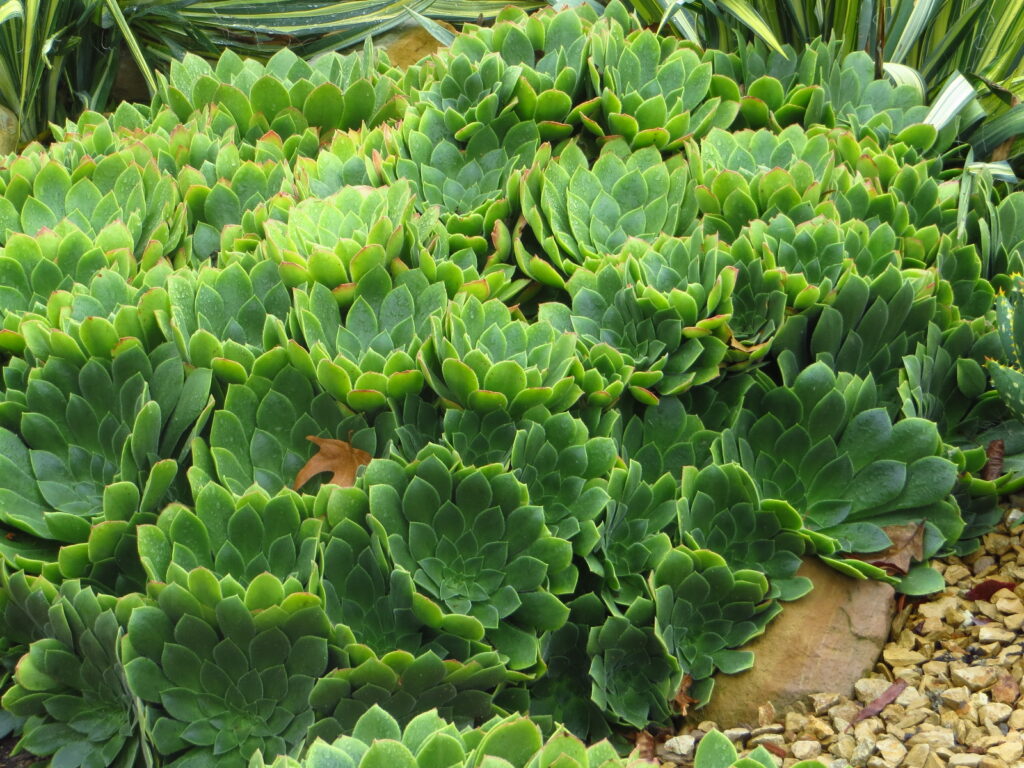
Healthy cactus and succulent garden
They attract bugs when poorly maintained, such as overwatered and poor aeration. Moreover, the constant wet soil provides the breeding sites for fungus gnats and destroys the succulent or the entire garden.
The term succulent comprises many plants, including cacti with thick and robust leaves and swollen stems to store water and nutrients for harsh conditions. Insect pests are a rare concern, considering the hardy nature of these beautiful and exotic plants. However, these problematic creatures can easily be controlled by organic and inorganic ways.
This write-up will highlight whether succulents attract bugs and spread them over other healthy plants. Also, how effectively can control these bugs on succulents.
Do Succulents Attract Bugs?
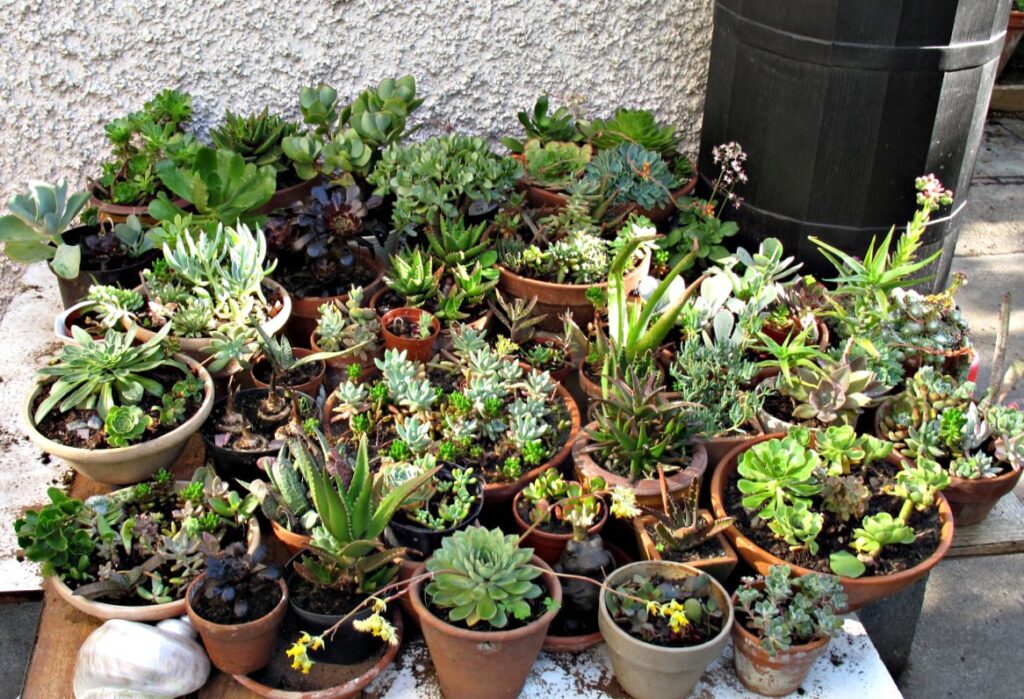
A display of exotic and beautiful succulents and cacti
Succulent plants produce exquisite flowers and showy leaves with a unique combination of colors. In these exotic plants, microbes and other pests are a rare concern due to their hardy nature and adaptation to arid dry, and drought conditions. But, sometimes, they do get pest infestations that cause severe destruction.
The most common pests on these hardy plants are spider mites, fungus gnats, aphids (plant lice or greenflies), whiteflies, scale insects, ants, and mealy bugs.
The most common pests on these hardy plants are spider mites, fungus gnats, aphids (plant lice or greenflies), whiteflies, scale insects, ants, and mealy bugs. Among these pests, the aphids, spider mites, and whiteflies are fast reproducing and double their populations within days. Unfortunately, as the infestations worsen, there is no way to revive the plant; the only solution is to discard the plant.
RELATED: Do Succulents Attract Flies? Plus, How to Knock Them Off on Succulents?
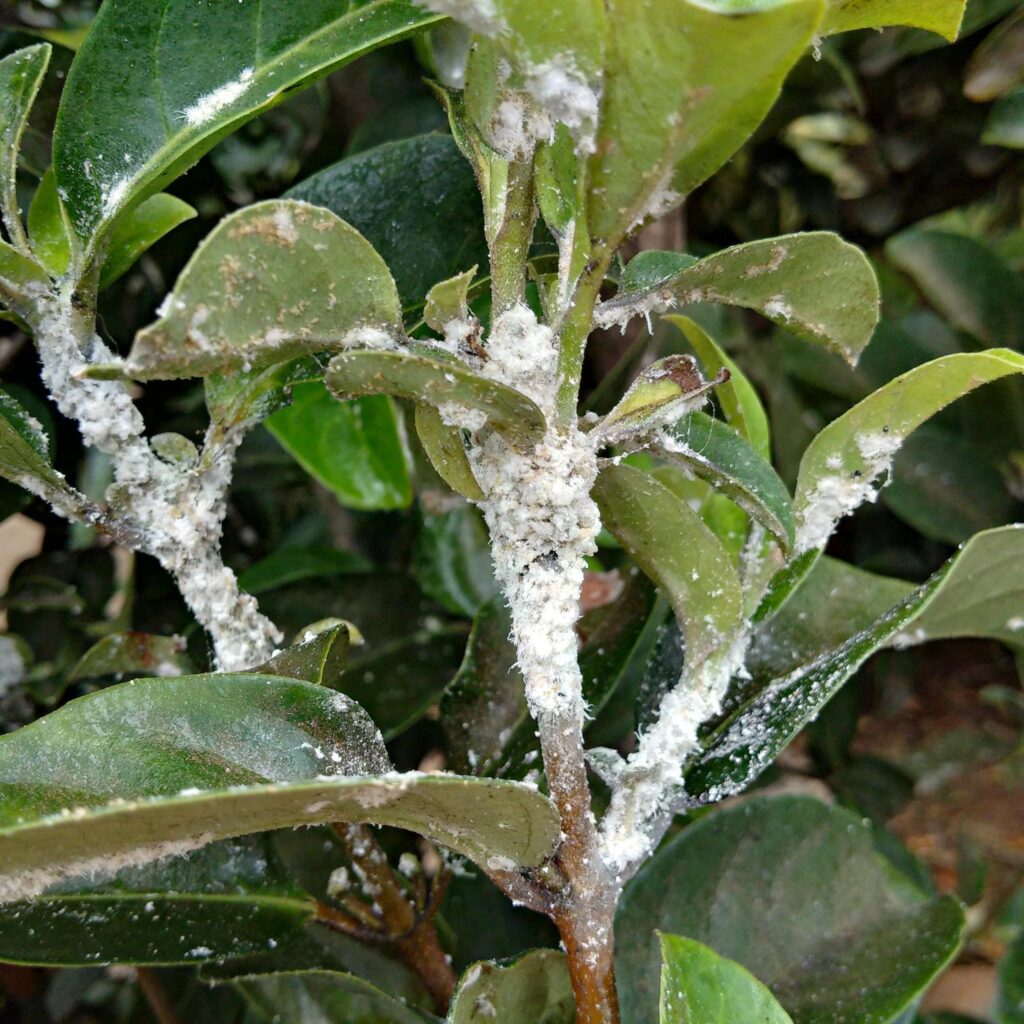
Severe mealybugs infestation with a sticky substance (honeydew)
Mealybugs are tiny, sap-sucking insects that produce honeydew on infested plant parts. These sticky and sugary substances attract the black ants and sooty mold fungus.

Black ants tend all stages of mealybugs on host plants and protect them from their natural enemies.
Black sooty mold fungus feeds on honeydew and spreads over the leaf surfaces with black spore masses, thus, interfering with the natural process of light absorption and photosynthesis.
Under severe infestations, succulents and other plants cannot fight back the attack and give in to injuries and die.
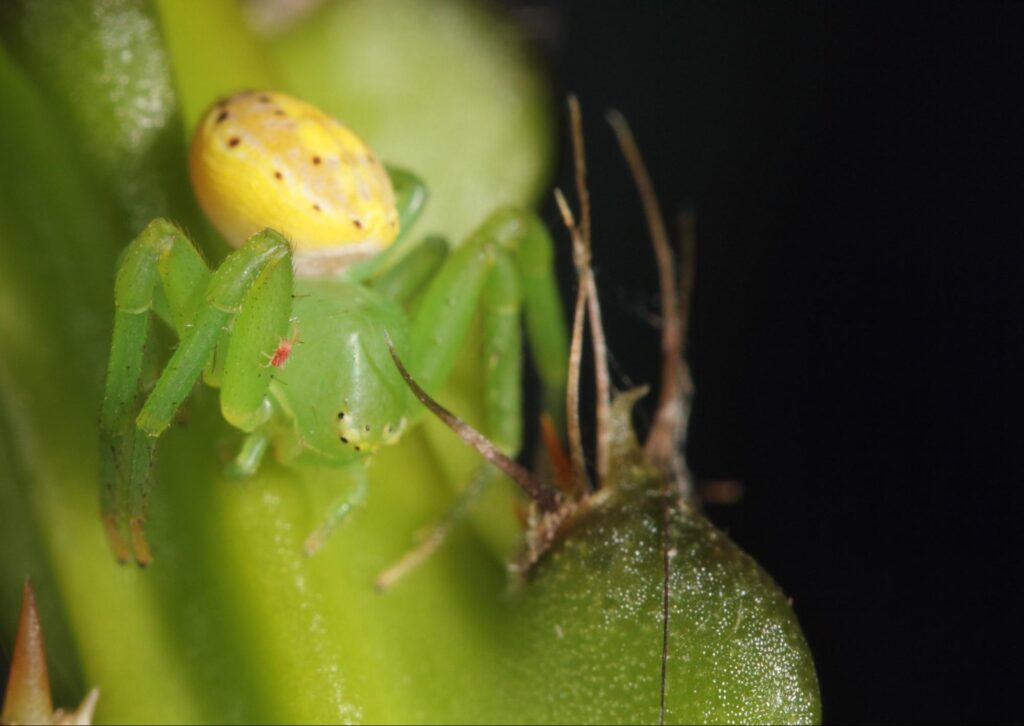
A red spider mite on a pink flower spider on a cactus plant (both are taking turns to suck out sap)—a phenomenon of pest on pest
Succulents attract spiders and other mite populations, especially the red spider mites. Like mealy bugs, they are sap feeders and inject their piercing-sucking mouthparts into host plant tissue.
Within days, the spider mites multiply into hundreds and thousands of numbers. For example, in warm and dry climates, the mite populations complete their life cycle within five days and have multiple generations per host plant.
The feeding damage of succulent plants includes pale yellow spotting on their showy leaves. It is because, during feeding, spider mites suck out chlorophyll and induce yellow spotting. Moreover, they inject toxins into the plants that interfere with normal metabolic processes.
RELATED: Do Succulents Attract Spiders? Yes, They Do! Let’s Learn How to Keep Them Away?
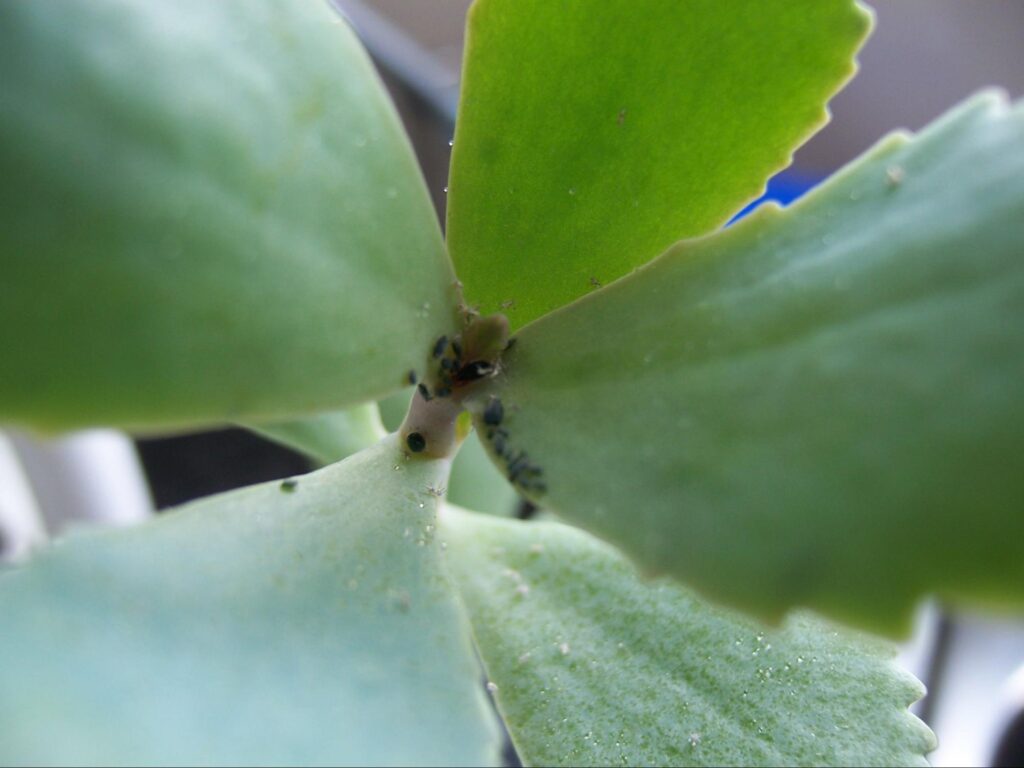
Aphid attack on a succulent plant
Succulents get aphid infestations from other weak and badly aphid-damaged plants. When there is no food (sap or plant fluids) on infested plants, the ants transfer the aphids to new, uninfested, healthy succulents. This transfer aims to produce more honeydew for them.
Important Factors by which Succulents Attract Bugs
Many factors attract the bugs to succulents; the poor potting soil mix and overwatering are the primary culprits. Here is the breakdown of all the factors involved in succulent plants infestations;
Poor Drainage
Good drainage for succulent plants is critical and ensures a proper supply of oxygen for roots to breathe and grow. Always select the pot size (large or small plant pot) appropriate for succulents with a sound drainage hole. Otherwise, the excess water will keep the soil wet for an extended period.
Once the soil and plant roots are wet for too long, it will attract bugs, especially fungus gnats. On the other hand, the moist potting soil mix provides the safe heavens to female gnats for egg-laying.
The other drawback of poor drainage is it causes root rot and attracts the soil-dwelling fungal and bacterial pathogens. In addition, the moist soil will stimulate the spore germination of fungi and bacteria.
Watering
Another important factor that attracts the bugs to succulents is watering. Overwatering exposes the roots to prolonged wet soil and favors the germination of fungal and bacterial infections. As a result, damaging the below- and above-ground plant parts.
Overwatering also increases the humidity levels, which leads to poor ventilation and damage by fungus gnats larvae. Also, the larvae of fungus gnats feed on young roots and negatively influence the succulent’s nutrient absorption process.
Like overwatered succulents, the underwatering turns the succulent leaves yellow and reduces the plant’s vigor to fight harmful insects. When a plant is weak, the pests and microbes are more eager to feed and damage them.
Be very careful while watering the succulents because they need small amounts of water with good drainage.
Poor Air Circulation
Good air circulation is essential for succulent plants and helps repel bugs. Once you increase or provide excellent air circulation to your succulents helps in the rapid drying of potting soil and inhibits fungus growth. In addition, it makes the conditions for bugs unhealthy to grow and reproduce.
On the other hand, good air circulation favors the growth of succulents.
Potting Mix
Good plant care for succulents means a balanced and high-quality potting soil mix. It should contain equal amounts of perlite or coarse material for proper drainage.
This way, the roots will have ample oxygen and nutrients to breathe and absorb. Such conditions will repel the bugs and help the succulents grow and bloom. There are many succulent-specific potting mixes to provide them with good drainage.
RELATED: Pests in Succulents and How to Get Rid of Them by Chemical & Natural Ways?
Do Succulents Attract Bugs? The Answer is Yes! There are Effective Treatments for Getting Rid of Them!
The improper growing conditions of succulents attract bugs and spread to other plants. However, there are suitable ways to get rid of these nasty bugs.
Cotton Swab Dipped in Rubbing Alcohol may Help in Killing of Scale Insects and Mealybugs

Rubbing alcohol helps in the elimination of scales and mealybugs
Mealybugs and scale insect infestations harm succulents in many ways. For example, their constant feeding on plant sap turns the plant yellow with reduced vigor. So, to get rid of them on your succulents, take a cotton swab, dip it into the rubbing alcohol, and directly apply it to the white cottony masses.
This is the simplest and most effective way to kill these sap-sucking insect pests. Another way is to spray rubbing alcohol directly but in diluted form to instantly kill the pests.
Spray Dish Soap to Kill Aphids, Whiteflies, Spider Mites, Mealy Bugs, and Fungus Gnats
Like rubbing alcohol, dish soap spray instantly kills insect pests on succulents. The applications of dish soap diluted effectively dissolve the soft-bodied aphids, whiteflies, mealybugs, soft-scale insects, and spider mites.
Regularly apply it to infested plants and isolate the affected plants from other healthy succulents. Start with daily dish soap diluted applications once the pest problem has vanished.
Spray Neem Oil to Kill Succulent Plants Bugs
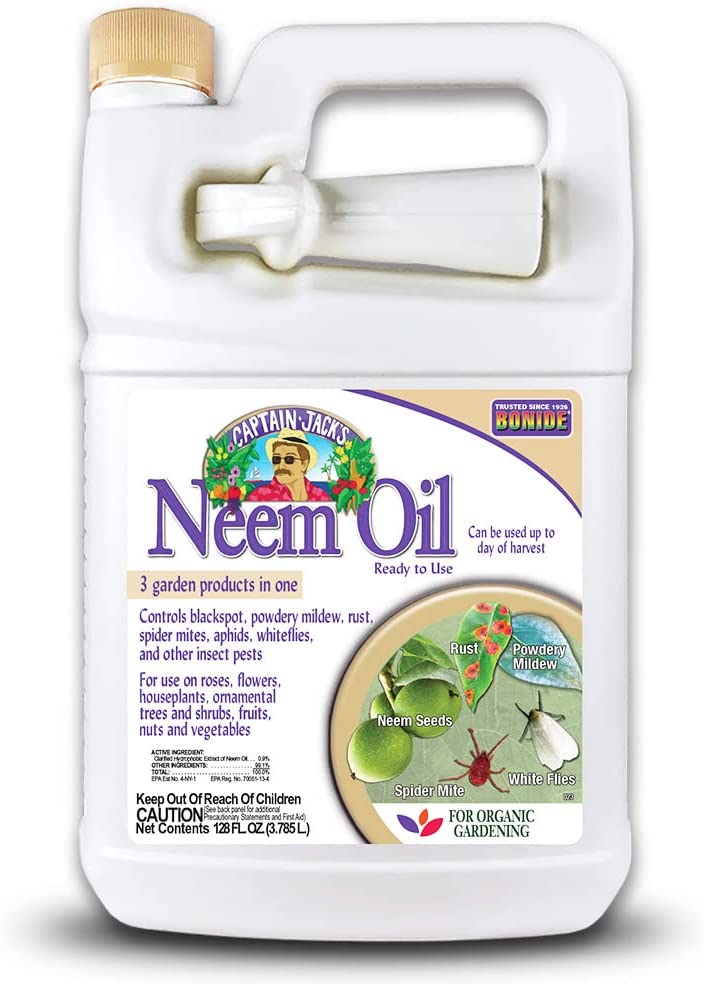
Ready-to-use neem oil spray kills all kinds of succulent pests and prevents plants from being damaged.
Natural and chemical pesticides are best for removing heavy bug infestations. The most common insecticides are neem oil, horticultural oil, acephate, dimethoate, Imidacloprid, and pyrethroids.
Neem oil applications in spring and summer prevent the damage of whiteflies, spider mites, gnat flies (adult flying insects), powdery mildew, and scale insects. The regular applications of the neem oil mixture dissolve the exoskeleton of the insect body and deter them. At the same time, horticultural oil sprays smother the damaging insects and prevent the succulents from feeding damage.
Encourage Beneficial Insects
Succulents attract flies because of their new growths and showy appearance during spring and summer. Some bugs and flies chew on plant parts, while others suck their juices. Introducing beneficial insects is the best and natural way to control bugs spreading on your succulents.
These natural predators actively munch on harmful bugs and keep their numbers under control. It includes lady beetle, green lacewings, spiders, and mantis. These natural predators manage the terrible bugs and lessen the risk of chemical insecticides.
FAQs
How do I Keep Bugs off my Succulents?
The following are the best practices to keep the bugs away from your succulents:
- Keep your succulent plants healthy. In this, they would be able to repel pests and continue to grow.
- Always buy insect pest-free succulents and thoroughly examine them. If you suspect any minor infestation, isolate the plant outdoors for at least two weeks and apply neem oil or soapy water spray.
- Provide the succulents with excellent growing conditions, such as keeping them in good light conditions, and use a high-quality potting mix with good drainage.
- Avoid overwatering succulents; otherwise, it would lead to an infestation of aphids, whiteflies, and mealybugs. These pests secrete sugary substances that attract black sooty mold fungus and ants.
- Water the potting soil of your succulents directly. Avoid the wetting of leaves because this showy foliage is prone to rot.
- Keep the succulents clean, and remove dust particles and fine webbing of spider mites to discourage infestations.
How do you Get Rid of Gnats from Indoor Succulents?
The best way to get rid of gnat flies from indoor succulents is to use yellow sticky cards to capture them. It interferes with their reproductive cycle and controls their numbers. On the other hand, to control fungus gnat larvae, use insecticidal soap as a soil drench in early spring.
How often should Succulents be Watered?
During the active growth season, the succulents need frequent water applications because they drink a lot of water to develop new growths. So, water your succulents weekly during spring and summer.
While in the winter season, these beautiful plants are in a dormant state and need watering less often. Apply once a month to keep them alive and happy. Be sure to check the potting soil and apply water when the top 2 inches layer of the earth is dry.
Do Indoor Cacti Attract Bugs?
Yes, indoor cacti attract bugs because the interior environments are ideal for helping the pests to thrive. It includes a warm, humid indoor atmosphere with poor air circulation. These bugs are aphids, whiteflies, thrips, scale insects, spider mites, and mealybugs.
Do Succulents Attract Bees?
The succulents attract bees, butterflies, and other beneficial birds to the gardens and landscapes. These helpful bugs help the succulents to thrive in the growing season and help them in pollination.
Do Succulents Attract Roaches?
Cockroaches need lots of water and deep shade to thrive and reproduce. So, they only attract those plants with overly wet potting mix and are in complete shade.
How Long Do Succulents Live?
Some succulents do not live longer and stay for three to four years (but produce many offsets for new plants), while others live for many years. For example, jade plants live for 70 to 100 years.
Sources for Further Reading
- Barrett, B. A. (n.d.). Aphids, Scales and Mites on Home Garden and Landscape Plants. University of Missouri Extension. Retrieved July 24, 2022, from https://extension.missouri.edu/publications/g7274
- Scott, J. M., & Williamson, J. (2022, July 22). Common Houseplant Insects & Related Pests | Home & Garden Information Center. Home & Garden Information Center | Clemson University, South Carolina. Retrieved July 21, 2022, from https://hgic.clemson.edu/factsheet/common-houseplant-insects-related-pests/
- Streets, J., Harris, N., & Carpenter, J. (2020, July). Succulents 101. Extension | West Virginia University. Retrieved July 21, 2022, from https://extension.wvu.edu/lawn-gardening-pests/indoor-plants/succulents-101
- Brown, D. L. (2018). Cacti and succulents. UMN Extension. Retrieved July 24, 2022, from https://extension.umn.edu/houseplants/cacti-and-succulents
Editor’s Recommendations
Learn How to and When is the Best Time to Water Succulents
Soaking The Soil: How Often You Should Water Your Succulents
Let There Be Light! How Much Light Your Succulents Need To Grow







